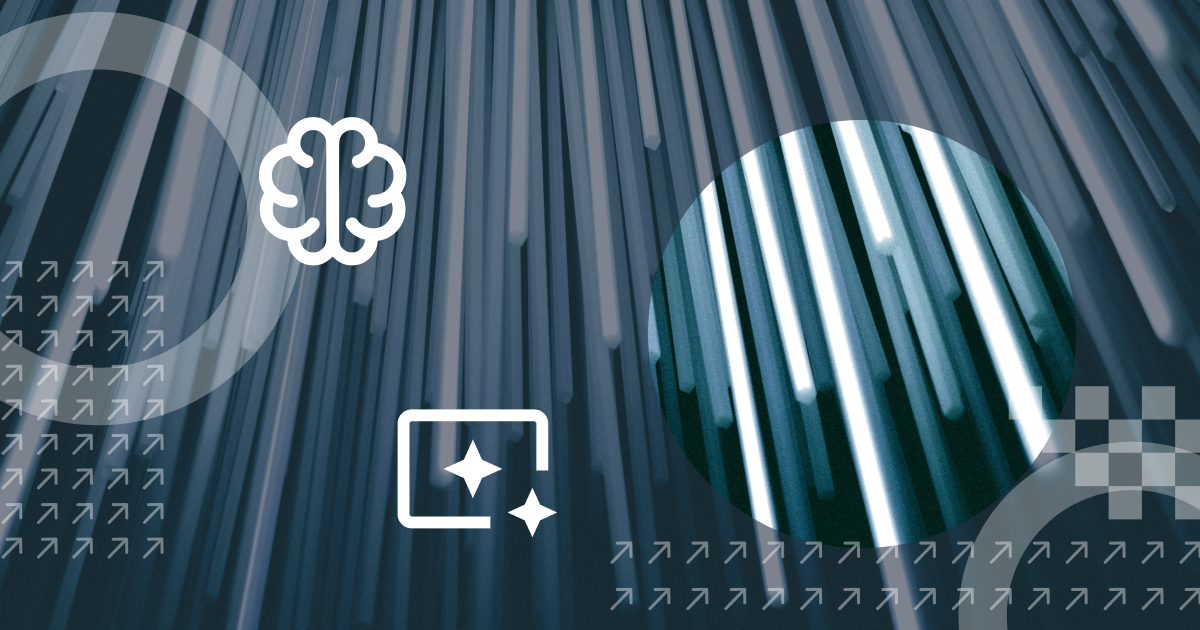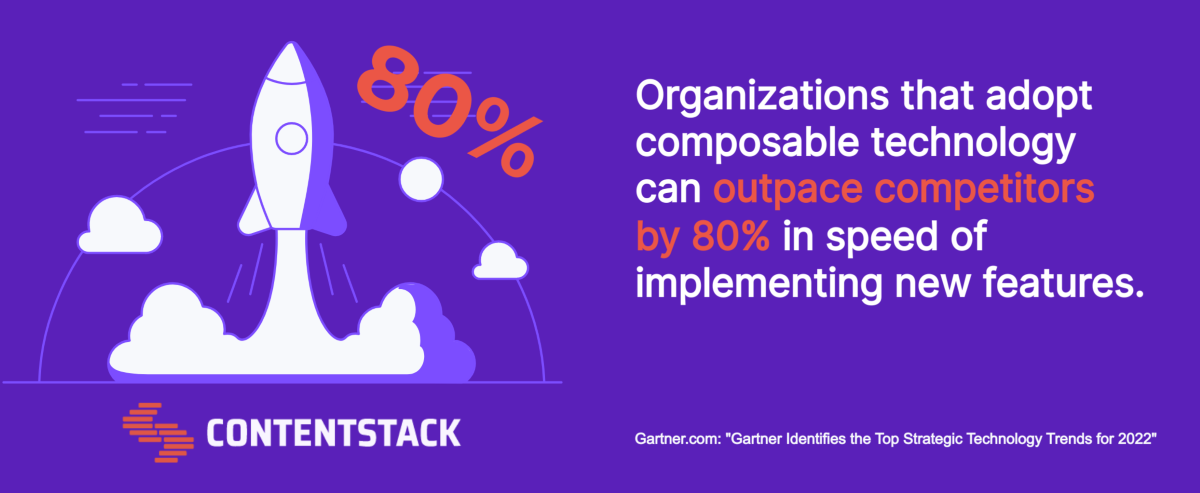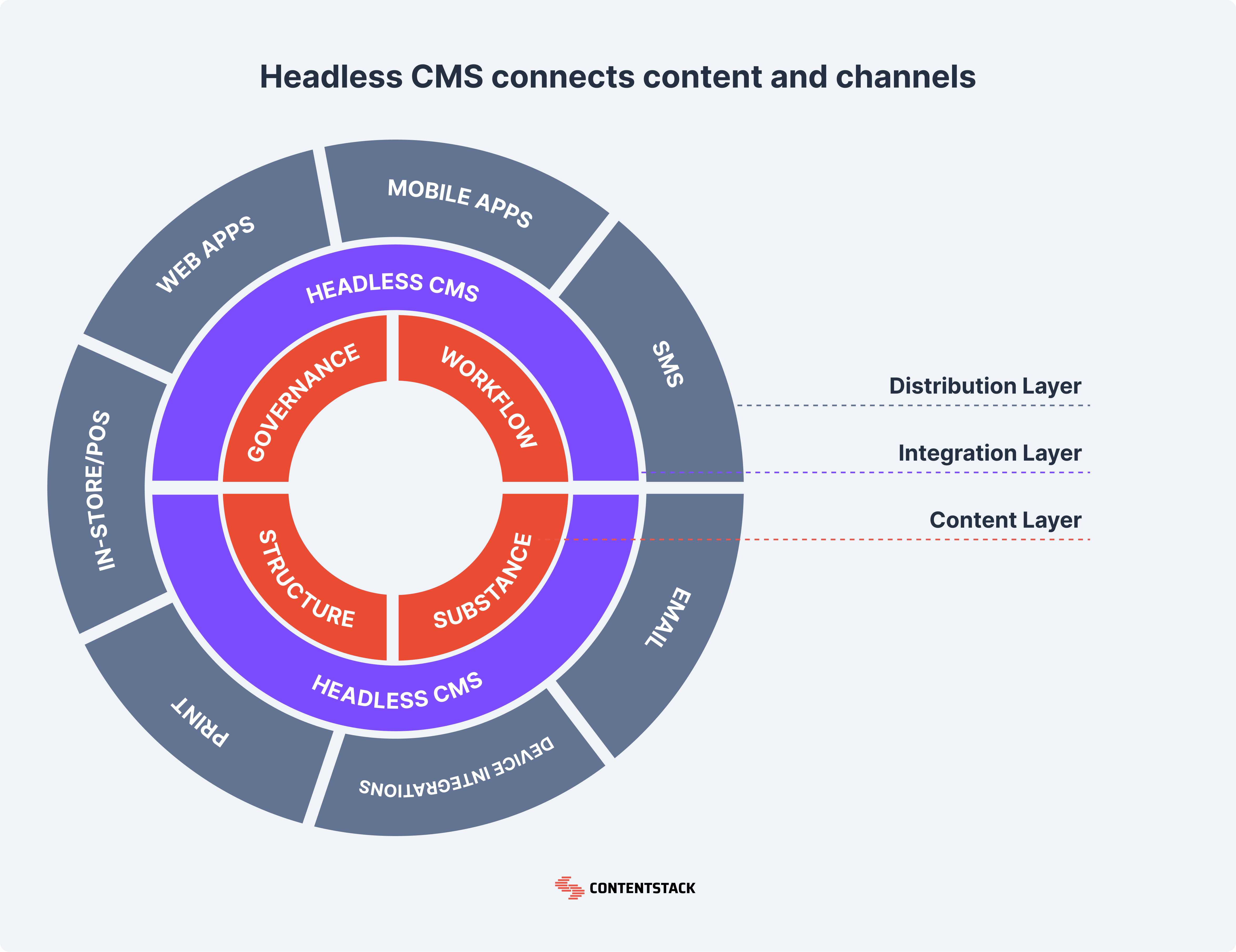Future-proofing with composable DXP & microservice tech

Discover how composable DXP and microservices can future-proof your enterprise tech. Learn how these strategies help you deliver scalable, flexible and tailored digital experiences, enhancing business resilience. Take the first step to achieve digital success. Request a free demo today to see how it works.
Highlights
You’ll learn:
How to embrace the future with microservices in composable DXP.
- Future-proof technology: Leverage composable DXP and microservices for a resilient tech stack that can adapt to market shifts
- Enhanced digital experiences: Use the agility of microservices within DXPs to deliver customizable, scalable solutions
- MACH architecture synergy: Adopt MACH principles to revamp your composable DXP strategy with a cloud-native, API-first, and headless approach
- Strategic implementation: Enjoy a seamless transition from monolithic to modular with our step-by-step guide on composable DXP strategies enhanced by microservices
Follow the guidelines below to future-proof your enterprise tech with microservices in composable DXP. Request a free demo to get started.
Keep reading to learn more!
Businesses face the challenge of keeping up with emerging technologies to stay competitive. Hence, they must adopt future-proof technologies. Integrating microservices with a composable digital experience platform is one way they can do that.
Composable DXP and microservices
A composable DXP relies on the microservices architecture to create a modular system. So, you can swap modules and adapt to new technology. That approach makes it future-proof.
A composable DXP allows you to choose and integrate best-of-breed solutions to address specific business needs. It is a modular approach that is flexible and promotes agility.

Microservices and their role in future-proofing DXPs
Microservices are built for speed, so you can expect faster updates, releases and time to market. Since each service is separate and independent, you can build, test and deploy quickly. They also make DXPs more resilient and foster innovation.
If one part of the application becomes redundant due to new technology, you can easily replace it and continue building.
Also, their distributed nature means you can integrate them with multiple tools and services, including data sources that enable you to track and optimize customer journeys.
Ensuring digital resilience with a future-proofed DXP
A resilient DXP is built to last. If one service fails, it does not affect other units or the whole system. Ensuring digital resilience with a future-proofed DXP requires synergy with microservices. Here are some strategies to follow.
Adopt a modular architecture: Use microservices and a headless approach to create a flexible system. This ensures each unit is decoupled, and you can update, test, deploy and scale them independently.
Go cloud-native: With cloud, you only assign resources to units that need them. It also supports auto-scaling that ensures your DXP can adjust to spikes or drops in traffic and can recover quickly should a failure occur.
Implement API-first design: Services interact via APIs. APIs also help you integrate various other third-party services. That enables you to integrate new technologies without much development effort.
Prioritize security: Implement security measures to protect user data and ensure that only authorized users can have access.
Start your free trial with Contentstack today. Transform your brand's digital presence with Contentstack's open MACH architecture and industry-leading technology. Witness a significant reduction in publishing and development time, and elevate your content management. Start your free trial now.
Steps for building a resilient and agile DXP with microservices
- Define clear interfaces: By setting up clear interfaces, you make the system loosely coupled and highly cohesive, which prepares your DXP for the future.
- Implement API gateways: API gateways are the sole entry point for clients to access the system. It routes requests, validates users, and uses rate limits to prevent system overuse.
- Deploy a service mesh: A service mesh enables services to interact within a microservice architecture. It also enhances the system through service discovery, encryption, and load balancing.
- Leverage cloud-native tools: Use cloud-native microservices to automate recovery and boost scaling. You can also include support for containers, ensuring you can deploy via portable tools.
- Setup design patterns: Microservices design patterns enable you to enjoy tech diversity, agility and resilience. Use circuit breakers, retries, and bulkheads to prevent failures from affecting the whole system and use database per service to maintain data consistency.
- Automate CI/CD: Use CI/CD pipelines to automate testing, building, and deployment. It reduces human error and enables you to release new fixes, features, and updates on demand.
- Monitor and log: Monitor the system and log activities to ensure you can detect and respond to issues promptly. Set up analytics to track system health at all times.
- Embrace DevOps: This approach enables DevOps teams to be more aligned and work within efficient processes.
The role of MACH in reinforcing DXP agility
When building a resilient DXP for the future, the MACH strategy also comes into play. The MACH principles underpin a flexible and modular approach that positions businesses to adapt to new market demands and tech shifts.
The role of MACH in future-proofing technology
MACH stands for microservices, API-first, cloud-native, and headless. It is a new approach by the MACH alliance that defines modern best-of-breed digital solutions. Here is how it helps to future-proof technology.
- Microservices: Separates business functions as single units that can be tested, managed and deployed on their own. It enables you to adapt and respond to technology shifts and new demands.
- API-first: APIs enable you to integrate new tech stacks and tools, and you can also connect two parts of a system using APIs. For instance, the front and back end of a headless CMS connect via APIs. So, using APIs, you can integrate new technologies with your existing system.
- Cloud-native: Cloud-native is a SaaS that offers you the full benefits of the cloud. It is not just hosting and storage. It goes beyond, offering you elastic scaling, automated updates and adequate computing resources when needed.
- Headless: MACH uses the headless approach to separate front end experience from the backend logic. That enables you to design an interface that aligns with the needs of the users. It also enables you to connect to multiple digital tools and devices.
The synergy between MACH and composable DXP strategies
MACH principles offer a flexible and modular approach for agility, integration via APIs, regular updates and customized content delivery via a headless CMS.
It aligns with the composable DXP best-of-breed solutions focus. It also supports a composable approach of delivering tailored customer experiences and responding swiftly to emerging trends, all of which combine to guarantee a future-proof digital platform.
Implementing composable DXP strategies with microservices
The transition from a monolithic DXP to a modular one requires careful planning and execution. Follow the below strategies to ensure a smooth transition.
- Define your business needs: Evaluate your business to understand your goals, customer needs and the existing digital experience. This will enable you to know the right strategy for your DXP.
- Set up microservices: Split the DXP into small and separate services, with each one focused on a single business function. For instance, one can handle CRM and the other analytics.
- Enable API-first design: Ensure that every service instance can interact via secure APIs. That ensures they can integrate well and exchange data among themselves and with external services.
- Choose cloud-native: Use cloud-native tech to deploy to benefit from managed services. Its scaling features also help save costs on overhead as resources only get assigned to units that need them.
- Deploy a headless CMS: A headless CMS separates the content layer (back end) from the front end. It works with APIs and enables you to deliver tailored content across multiple channels.

Prioritize security: Set up robust security protocols at the service level, such as encryption and regular security audits. Also, ensure that you adhere to all relevant data protection regulations and industry standards.
Monitor, analyze, and iterate: Track how the system performs, its health, and how users engage with it. This proactive strategy ensures you can catch and rectify any issues on time.
Case studies
Burberry
When Burberry’s legacy system struggled with the pace of the luxury fashion industry, it opted for MACH to reignite its e-commerce strategy and align it with the future.
Along with Contentstack’s composable DXP and integrations, they boosted publishing speed by 80% and reduced tickets from 40 to less than one per week.
Sonia Latoracca, the digital commerce content manager, had this to say. “Contentstack helps our engineers to move fast and concentrate on business requirements by reducing proprietary platform inconveniences. Adding new consumers has never been such an easy and pleasant journey for everyone.”
Read more about how Burberry went agile via a future-proofed composable DXP.
Cartier
What do you turn to when you want to improve operations efficiency and position for DXP for the future? For Cartier, it was simple. MACH and Contentstack’s composable DXP with a headless CMS.
The switch enabled them to deliver greater ROI on content assets while ensuring brand integrity in their different initiatives.
Anastasia Goglova, International Digital Lead, said this."The websites that are such a critical part of our digital portfolio are now more aligned and more performant. As a result, the customer digital experience of Cartier improves, reflecting our commitment to becoming a reference for luxury in all aspects."
Read more about Cartier’s MACH-inspired success story with a composable DXP.
Future trends in composable DXP
As customer needs evolve, businesses will prioritize that to ensure they can deliver tailored services that resonate. Several new technologies will come into play, as seen with AI and machine learning.
The 5G technology will introduce more speed in terms of services, while IoT devices and EDGE computing will extend the functions of composable DXPs.
Businesses will also commit to user experience to deliver more engaging digital solutions.
Finally, distributed systems like microservices have many potential surface areas for cyber attacks. Hence, there will be more focus on security to maintain system integrity.
Experience future-ready DXP with Contentstack. Contentstack, identified by Forrester's composable DXP award, is an industry leader for enterprises wanting to future-proof their digital strategy. Our high scores in vision and innovation speak for themselves. Request a demo to explore our best-in-class features.
FAQ section
What differentiates a composable DXP from traditional digital experience platforms?
A composable DXP is flexible, integrates with multiple tools and supports tailored content, while a traditional DXP is tightly coupled and can be difficult to customize or scale.
What makes a DXP "composable," and why is it important for future-proofing?
Composability in a DXP means that the system can integrate and customize microservices and unit parts in such ways that adapt to business needs and market situations as they evolve, and that is essential for future-proofing.
Can microservices alone ensure a future-proof DXP?
While they support a scalable and modular approach, they are insufficient. A future-proof DXP must also be flexible, adaptable and available on demand. Hence, MACH provides a cloud-native, API-first and headless approach to augment microservices.
How do microservices contribute to the scalability of digital experience platforms?
It enables you to develop and deploy via a modular approach. That way, you can scale specific components as and when needed, and that improves the platform's ability to scale.
How does MACH enhance a composable DXP?
MACH bolsters DXP agility by integration via APIs, cloud resources that enable you to handle varying traffic loads and a headless CMS to tailor modular content. Thus, you can adapt to tech shifts and customer demands.
Learn more
As new technologies come thick and fast, businesses must adapt and adjust swiftly. The synergy of composable DXP and microservices offers a reliable solution. They offer a modular, scalable and flexible approach to enable you to future-proof your digital strategy.
If you are unsure where to start, a composable DXP that aligns with the MACH strategy is the right fit for you. Request a free demo to get a hands-on experience.
About Contentstack
The Contentstack team comprises highly skilled professionals specializing in product marketing, customer acquisition and retention, and digital marketing strategy. With extensive experience holding senior positions at renowned technology companies across Fortune 500, mid-size, and start-up sectors, our team offers impactful solutions based on diverse backgrounds and extensive industry knowledge.
Contentstack is on a mission to deliver the world’s best digital experiences through a fusion of cutting-edge content management, customer data, personalization, and AI technology. Iconic brands, such as AirFrance KLM, ASICS, Burberry, Mattel, Mitsubishi, and Walmart, depend on the platform to rise above the noise in today's crowded digital markets and gain their competitive edge.
In January 2025, Contentstack proudly secured its first-ever position as a Visionary in the 2025 Gartner® Magic Quadrant™ for Digital Experience Platforms (DXP). Further solidifying its prominent standing, Contentstack was recognized as a Leader in the Forrester Research, Inc. March 2025 report, “The Forrester Wave™: Content Management Systems (CMS), Q1 2025.” Contentstack was the only pure headless provider named as a Leader in the report, which evaluated 13 top CMS providers on 19 criteria for current offering and strategy.
Follow Contentstack on LinkedIn.






.svg?format=pjpg&auto=webp)
.svg?format=pjpg&auto=webp)
.png?format=pjpg&auto=webp)






.png?format=pjpg&auto=webp)


